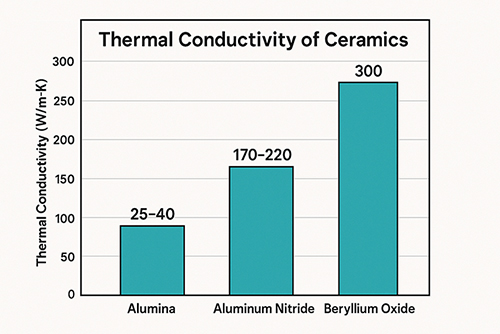Uncover the Mysterious Veil of the New Material: Cermets
A cermet is a composite material composed of a ceramic phase bonded with a metallic or alloy phase. Cermets exhibit excellent properties of ceramics, such as high hardness, wear resistance, high-temperature resistance, oxidation resistance, and chemical stability, while also having the toughness and plasticity of metals.
The earliest cermets, WC-Co, have been widely used in various fields due to their exceptional hardness. However, with the limited availability of tungsten (W) and cobalt (Co) resources, research and development of tungsten-free cermets have gone through three generations. The first generation was during World War II when Germany produced cermets using nickel (Ni)-bonded titanium carbide (TiC). The second generation emerged in the 1960s, when Ford Motor Company added molybdenum (Mo) to the Ni bonding phase, improving the wettability of TiC and other carbides, thus enhancing material toughness. In the third generation, nitrides were introduced into the hard phase of the alloy, transforming the single phase into a composite phase, and the bonding phase was improved by adding Co phase and other elements.
The latest trend in cermets is the boride-base cermet, which shows great potential due to the unique properties of boride ceramics, such as high hardness, melting point, excellent conductivity, and corrosion resistance. These properties make boride-base cermets the most promising cermet.
In addition, ongoing research on cermets is exploring new materials, manufacturing processes, and applications. For instance, the development of cermets with improved electrical conductivity, optical transparency, and biocompatibility is opening up new possibilities in fields such as electronics, optoelectronics, and medical devices.
The development of cermets has opened up new avenues for creating materials that possess the desirable characteristics of both metals and ceramics. The addition of fine oxide powder to the metal matrix in cermet with a metal matrix has been a significant advancement in this field. Dispersion reinforcing materials, such as sintered alumina, beryllia and thorium ni-oxide, are some examples of oxide powders added to metal matrices.
Cermets can be broadly classified as refractory compound alloys, hard alloys, and metal-bonded diamond tool materials. The ceramic phase in cermets is typically an oxide or refractory compound with a high melting point and high hardness, while the metallic phase mainly comprises transition elements and their alloys.
One of the primary advantages of cermets is their low density and high hardness, which makes them resistant to wear and heat. They also exhibit good thermal conductivity and stability and do not crack easily when exposed to sudden temperature changes. Additionally, coating the metal surface with a ceramic coating can further enhance its resistance to oxidation or corrosion at high temperatures.
Cermets find extensive applications in industries that require materials with high temperature, corrosion, and wear resistance. For example, they are used in the production of rocket and missile shells, supersonic aircraft shells, and combustion chamber flame vents, among others. With ongoing research and development, the use of cermets is expected to expand further, leading to the creation of new and innovative materials with exceptional properties.
In conclusion, cermets are composite materials that combine the desirable properties of both ceramics and metals. They offer exceptional hardness, wear resistance, high-temperature and corrosion resistance, and good thermal stability. Ongoing research is exploring new materials, manufacturing processes, and applications, which is expected to expand the use of cermets in various fields. The development of boride-base cermets shows significant potential, and cermets with improved electrical conductivity, optical transparency, and biocompatibility are opening up new possibilities in electronics, optoelectronics, and medical devices.
Advanced Ceramic Materials (ACM) supplies high-quality ceramics and related products to meet our customers’ R&D and production needs. Please visit https://www.preciseceramic.com/ for more information.
{{item.content}}
LEVE A REPLY
{{item.children[0].content}}
{{item.content}}
LEAVE A REPLY
SUBSCRIBE OUR NEWSLETTER
- Boron Nitride in Cosmetics: Enhancing Performance and Sensory Appeal
- Maximize MOCVD Yield and Purity with Hexagonal Boron Nitride Setters
- What Are the Advantages and Uses of Boron Nitride Ceramic Sheet?
- The Compression Annealing Advantage for Pyrolytic Boron Nitride
- Beyond Insulation: The Surprising Spectrum of Ceramic Thermal Conductivity











